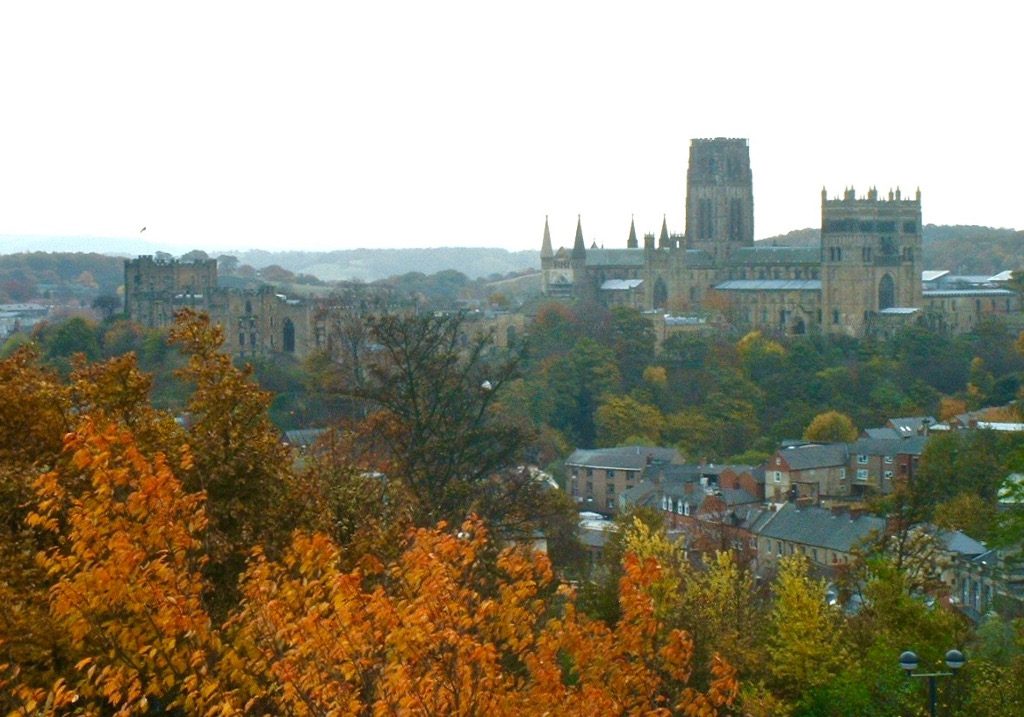OVERALL VISION
3.1 Durham City’s potential as a beautiful historic City will be realised through policy and action to improve and protect its qualities and by creating a diverse and resilient economy with attractive, healthy and affordable places to live. It will be supported by modern infrastructure, protected by adaptation to climate change and enriched by community engagement in its future.
THEMES AND OBJECTIVES
3.2 The Plan comprises six themes:
Theme 1: A City with a sustainable future
Theme 2: A beautiful and historic City
- Heritage
- Green infrastructure
Theme 3: A City with a diverse and resilient economy
Theme 4: A City with attractive and affordable places to live
Theme 5: A City with a modern and sustainable transport infrastructure
Theme 6: A City with an enriched community life
3.3 Each individual theme has its own vision (expanding on part of the overall vision) and its own set of objectives. Together these objectives form the objectives of the Plan.
3.4 These themes and objectives were developed from the Forum’s priority survey responses (Durham City Neighbourhood Planning Forum, 2015).
Summary of Answers to ‘What Is Good About Durham City Centre’
3.5 The comments are listed in descending order of frequency, i.e. the most frequent are at the top – the ones starred are particularly recurrent.
- ****World Heritage Site, cathedral, castle, Palace Green
- ***Riverbank setting and riverside walks
- **University and students (adds to City vibrancy and economy), attractive environment of colleges, and public facilities (e.g. Botanical Garden, Library, Oriental Museum), lectures and exhibitions
- **Public transport and road transport links
**Woodland ‘wedges’ which bring green space into City - **Historic City (e.g. its Mayor and Bodyguard, Crook Hall, churches, mining heritage)
- *Shops, coffee shops, pubs and restaurants
- *Lively, vibrant, multi-cultural, with friendly people and strong community feeling
- *Compact size
- Market place and indoor market
- Variety of historic and period properties (not just on peninsula)
- Attractive streetscapes / beautiful architecture
- Leisure and cultural facilities (e.g. Gala Theatre and cinema, Freeman’s Quay, public library, DLI Museum and Art Gallery (now DLI Regiment Collection))
- Large number of pedestrianised areas in City
- Council flower displays and tree plantings
- Park & ride, and car parking
- Close to beautiful countryside, and nearby towns
- Parks and nature areas (e.g. Flass Vale, Wharton Park, Aykley Heads, Browney Valley, Baxter Wood)
- High profile festivals (e.g. Lumiere, Book Festival, Brass, Miners’ Gala, sporting events)
- Schools
Summary of Answers to ‘What Is Bad About Durham City Centre’
3.6 The comments are listed in descending order of frequency, i.e. the most frequent are at the top – the ones starred are particularly recurrent.
- ***Excessive student housing (much poorly maintained and unsympathetically altered)
- **North Road (tawdry and dirty, run down, ASB focus, charity shops, poor introduction to City for visitors)
- **Poor retail offer (of both small, independent traders and big names), empty shops
- **Pedestrian experience (e.g. poor maintenance of pavements, dirty, lack of kerbs, lack of street lighting, holes, traffic and pollution, overhanging vegetation, cluttering with rubbish bins, bill boards, tables and chairs, not suitable for people with disabilities or people with pushchairs, material (cobbles), more bridges and crossing points of river and A690)
- **Planning decisions (inappropriate, unsuitable for a World Heritage Site, ignoring residents’ views, poor implementation of control, lack of cohesion / gulf between University and Council, vested interests)
- **Traffic congestion
- **Night-time economy (too geared to drinking, encouraging anti-social behaviour)
- *Littering (including riverbanks)
Market Place (poor redevelopment) - Parking (lack of spaces, location, cost, park & ride needs improvement)
- Poor design of new, modern build developments (e.g. Prince Bishops, Gates, 60s and 70s developments)
- Millennium Place (bleak, unwelcoming, underutilised, lack of greenery)
- Loss of / lack of open and green spaces and threat to green belt
- Student behaviour
- Lack of tourist information centre
- Lack of housing for local residents/unbalanced community
- Road system and traffic management
- Poor appearance/maintenance of premises and streetscape
- Lack of City Council
Summary of Answers to ‘What Needs to Change’
3.7 The comments are listed in descending order of frequency, i.e. the most frequent are at the top – the ones starred are particularly recurrent.
- ***Redress the huge imbalance towards student accommodation, and the various problems this causes
- **Change the County Council’s approach to making planning decisions: take on board the views of local residents
- **Increase the diversity of retail outlets (both big names and small independent/speciality shops); reduce business rates/rents
- *Provide more housing (e.g. affordable housing; housing for families, older people and young professionals)
- *Preserve and protect the City’s heritage
- *Protect green spaces/green belt and the environment
*Improve traffic management and provide a better road system - *Upgrade North Road
- *Improve the provision for pedestrians
- Promote and support tourism (e.g. reopen the Tourist Information Office)
- Deal with littering and clean the streets
- Tackle the drinking culture leading to anti-social behaviour
- Provide more entertainment facilities (e.g. a multiplex cinema)
- Set up a Durham City Council
- Provide more community, leisure, and cultural facilities
- Improve the Riverside
- Develop balanced communities
- Tackle parking issues (e.g. extend the Park & Ride facilities)
- Improve public transport
- Improve the Market Place
- Improve infrastructural facilities, such as street lighting, public toilets, sewage works, cable TV and Internet provision
- Improve the Bus Station
- Improve cycling facilities
Next section: Chapter 4: Planning Policies and Proposals for Land Use


